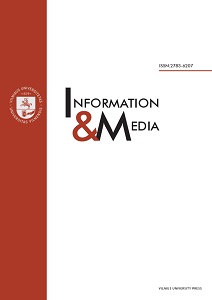Vyresnio amžiaus asmenų patikėjimo tikromis ir melagingomis naujienomis ypatumai
Characteristics of Older People’s Belief in Real and Fake News
Author(s): Antanas Kairys, Vytautas Jurkuvėnas, Vita Mikuličiūtė, Viktorija Ivleva, Vilmantė PakalniškienėSubject(s): Media studies, Communication studies, Health and medicine and law, Demography and human biology
Published by: Vilniaus Universiteto Leidykla
Keywords: belief in fake news; older people; cluster analysis; vaccination intentions; trust in democratic institutions;
Summary/Abstract: Introduction. The spread of fake news on the internet is an increasingly serious problem. When analysing belief in fake news, people are usually treated as homogeneous group, however, previous studies suggest that different groups may exist. This study aims to identify clusters of older people according to their level of belief in real and fake news. Methods. 504 people aged 50 to 90 years (M=64.37, SD=9.10) participated in the study. Belief in true and false news was assessed using 10 news headlines (six false, four true). Respondents’ vaccination intentions and trust in democratic institutions were assessed. A cluster analysis was performed to distinguish between groups of respondents. Results. Four clusters were identified and replicated: moderately believing in fake and real news; believing in real but not in fake news; tending not to believe in either real or fake news; and tending to believe in both real and fake news. Individuals who fell into the cluster of believers in both real and fake news had lower intentions to vaccinate against COVID-19 and lower trust in political institutions. Conclusions. The study provides evidence that people aren’t homogeneous in their belief in fake and real news, and four meaningful clusters can be distinguished.
Journal: Information & Media
- Issue Year: 2023
- Issue No: 97
- Page Range: 49-68
- Page Count: 20
- Language: Lithuanian

